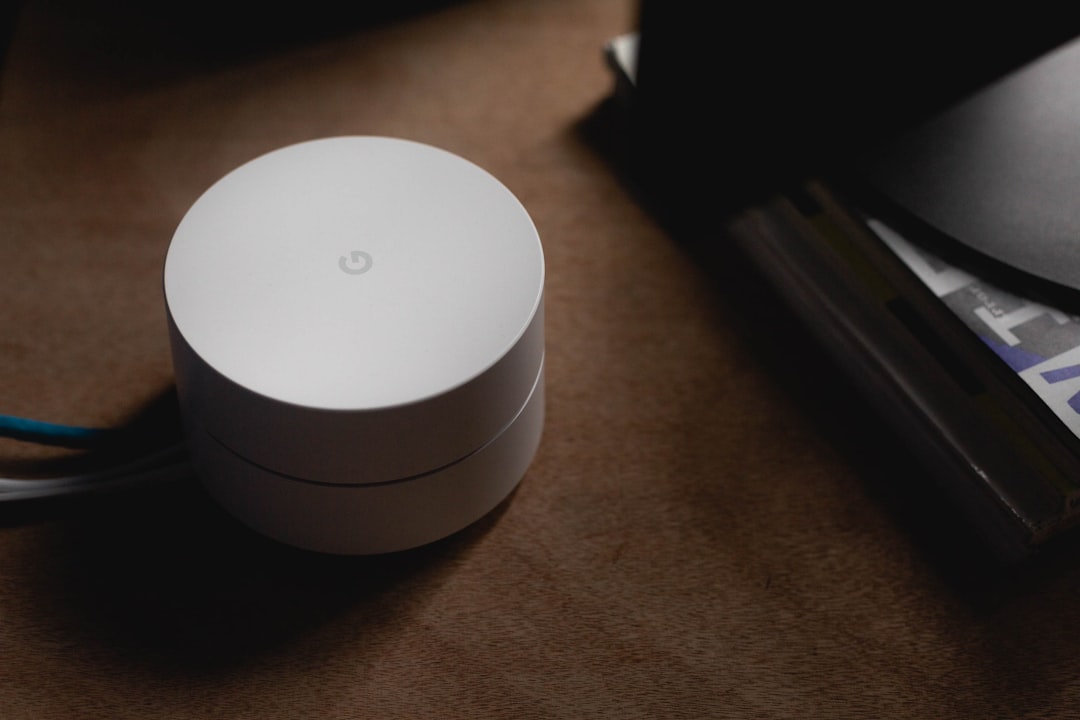
Compatible Routers for Glo Fiber Internet
Glo Fiber Internet is a high-speed internet service that leverages fiber-optic technology to deliver exceptional connectivity. Unlike traditional broadband services that rely on copper wires, fiber-optic connections use light signals transmitted through glass or plastic fibers, resulting in faster speeds and more reliable service. This technology allows for symmetrical upload and download speeds, which is particularly beneficial for activities such as video conferencing, online gaming, and streaming high-definition content.
The increasing demand for bandwidth-intensive applications has made fiber-optic internet a preferred choice for both residential and commercial users. The advantages of Glo Fiber Internet extend beyond mere speed. Fiber connections are less susceptible to interference and signal degradation compared to their copper counterparts.
This means that users can enjoy a stable connection even during peak usage times. Additionally, fiber-optic networks can support a greater number of simultaneous connections without compromising performance, making them ideal for households with multiple devices. As more people work from home and engage in online activities, the need for a robust internet connection has never been more critical, positioning Glo Fiber Internet as a leading solution in the market.
Key Takeaways
- Glo Fiber Internet is a high-speed fiber optic internet service that offers fast and reliable connectivity for homes and businesses.
- When looking for a compatible router for Glo Fiber Internet, it’s important to consider factors such as speed, range, and security features.
- The top 5 recommended routers for Glo Fiber Internet include models from brands like Google, Netgear, and TP-Link, known for their performance and reliability.
- Setting up your router for Glo Fiber Internet involves connecting it to the modem, configuring the settings, and securing the network with a strong password.
- Common router issues with Glo Fiber Internet can be troubleshooted by checking for firmware updates, optimizing the placement of the router, and addressing interference from other devices.
What to Look for in a Compatible Router
Compatibility with Fiber-Optic Technology
Not all routers are designed to handle the high speeds and bandwidth that fiber connections offer. Look for routers that explicitly state their compatibility with fiber-optic services and support the latest Wi-Fi standards, such as Wi-Fi 6 (802.11ax), which provides improved speed, capacity, and efficiency.
Router Speed Capabilities
Routers are typically rated by their maximum throughput, which indicates how much data they can handle at once. For Glo Fiber Internet, it is advisable to choose a router that can support speeds significantly higher than your subscribed plan to future-proof your network.
Additional Features to Consider
Additionally, consider the number of Ethernet ports available on the router if you plan to connect multiple wired devices. Features such as Quality of Service (QoS) settings can also enhance your experience by prioritizing bandwidth for specific applications or devices.
Top 5 Recommended Routers for Glo Fiber Internet

When it comes to choosing the best routers for Glo Fiber Internet, several models stand out due to their performance, features, and user reviews. The first recommendation is the ASUS RT-AX88U, a dual-band router that supports Wi-Fi 6 technology. With a maximum throughput of 6000 Mbps, it is well-suited for high-demand environments.
Its robust security features and customizable settings make it an excellent choice for tech-savvy users. Another strong contender is the NETGEAR Nighthawk AX12 (RAX120), which boasts an impressive 12-stream capability and supports speeds up to 6 Gbps. This router is designed for large homes with multiple devices and offers advanced features like dynamic QoS and a powerful processor to handle heavy traffic efficiently.
Its sleek design and user-friendly interface further enhance its appeal. The TP-Link Archer AX6000 is also worth considering, especially for those who require extensive coverage and speed. With eight Gigabit LAN ports and dual-band capabilities, this router can easily manage multiple devices without sacrificing performance.
Its built-in security features and easy setup process make it accessible for users of all technical levels. For users seeking a more budget-friendly option, the Linksys EA7300 is an excellent choice. This dual-band router supports speeds up to 1.7 Gbps and offers solid performance for streaming and gaming.
Its simple setup process and compatibility with Amazon Alexa make it a convenient option for smart home integration. Lastly, the Google Nest Wi-Fi system provides an innovative mesh networking solution that ensures seamless coverage throughout larger homes. With its user-friendly app and automatic updates, this system is perfect for those who prioritize ease of use while still enjoying reliable performance.
Setting Up Your Router for Glo Fiber Internet
| Router Setting | Details |
|---|---|
| Router Model | Glo Fiber recommended models |
| Connection Type | PPPoE or DHCP |
| Username | Glo Fiber provided username |
| Password | Glo Fiber provided password |
| IP Address | Static or Dynamic |
| DNS Server | Glo Fiber DNS server addresses |
Setting up your router for Glo Fiber Internet involves several steps to ensure a smooth connection. First, connect the router to the fiber-optic modem provided by your internet service provider (ISP). This typically involves using an Ethernet cable to link the WAN port on the router to the modem’s LAN port.
Once connected, power on both devices and wait for them to fully boot up. Next, access the router’s web interface by entering its IP address into a web browser. This address is usually found in the router’s manual or on a sticker located on the device itself.
After logging in with the default credentials (which should be changed later for security purposes), you can configure various settings such as your Wi-Fi network name (SSID) and password. It’s advisable to use WPA3 encryption if available, as it provides enhanced security compared to older protocols. Once your basic settings are configured, consider enabling features like guest networks or parental controls if needed.
Finally, ensure that your router’s firmware is up-to-date to benefit from the latest security patches and performance improvements.
Troubleshooting Common Router Issues with Glo Fiber Internet
Despite the reliability of Glo Fiber Internet, users may occasionally encounter issues with their routers that can disrupt connectivity. One common problem is slow internet speeds, which can be caused by various factors such as network congestion or outdated firmware. To troubleshoot this issue, start by rebooting your router; this simple step can often resolve temporary glitches.
If slow speeds persist, check the number of devices connected to your network. Too many active connections can strain bandwidth and lead to reduced performance. Disconnect any unnecessary devices and run a speed test to see if there’s an improvement.
Additionally, consider repositioning your router to a more central location in your home to enhance signal strength. Another frequent issue is intermittent connectivity or dropped connections. This can be attributed to interference from other electronic devices or physical obstructions like walls or furniture.
To mitigate this problem, try changing the Wi-Fi channel in your router settings or switching from the 2.4 GHz band to the 5 GHz band if supported by your devices. The latter typically offers faster speeds over shorter distances but may have less range.
Maximizing Your Glo Fiber Internet Speed with the Right Router

Optimizing Router Settings for Maximum Speed
One effective way to maximize speed is by utilizing Quality of Service (QoS) settings available on many modern routers. QoS allows you to prioritize bandwidth allocation for specific applications or devices, ensuring that critical tasks like video conferencing or online gaming receive sufficient resources even during peak usage times.
Unlocking Advanced Router Features
Additionally, consider enabling MU-MIMO (Multi-User Multiple Input Multiple Output) technology if your router supports it. This feature allows multiple devices to communicate with the router simultaneously without degrading performance, making it ideal for households with numerous connected devices. Furthermore, regularly updating your router’s firmware can enhance performance by fixing bugs and improving overall functionality.
Boosting Wi-Fi Signal Strength
Another strategy involves optimizing your Wi-Fi signal strength by adjusting antenna positions or using external antennas if available. Placing your router in an elevated position away from walls and obstructions can significantly improve coverage throughout your home. For users experiencing persistent issues with Wi-Fi coverage in larger spaces, investing in a mesh network system can provide seamless connectivity across multiple rooms.
Upgrading Your Router for Better Performance with Glo Fiber Internet
As technology evolves and internet usage patterns change, upgrading your router may become necessary to maintain optimal performance with Glo Fiber Internet. If you find that your current router struggles to handle multiple devices or fails to deliver consistent speeds, it may be time to consider a more advanced model that supports newer standards like Wi-Fi 6. When upgrading, look for routers that offer features tailored to your specific needs.
For instance, if you frequently stream 4K content or engage in online gaming, prioritize routers with high throughput capabilities and low latency features. Additionally, consider models with advanced security protocols such as WPA3 encryption to protect your network from potential threats. Before making a purchase, assess your home’s layout and size to determine whether a single router will suffice or if a mesh system would be more appropriate for comprehensive coverage.
Investing in a high-quality router not only enhances current performance but also prepares your home network for future demands as more devices become connected.
Future-Proofing Your Home Network with a Compatible Router for Glo Fiber Internet
Future-proofing your home network involves selecting a router that can adapt to evolving technology trends and increasing bandwidth demands over time. As smart home devices proliferate and high-definition streaming becomes more prevalent, having a robust router capable of handling these advancements is crucial. When choosing a compatible router for Glo Fiber Internet, prioritize models that support the latest Wi-Fi standards and have sufficient processing power to manage multiple connections simultaneously.
Features such as beamforming technology can enhance signal strength by directing Wi-Fi signals toward connected devices rather than broadcasting them uniformly in all directions. Additionally, consider routers with built-in support for IoT (Internet of Things) devices, which are becoming increasingly common in modern homes.
Investing in a future-proof router not only enhances current performance but also provides peace of mind as technology continues to advance rapidly. By selecting a model that meets today’s demands while being adaptable for tomorrow’s innovations, you can ensure that your home network remains efficient and reliable for years to come.
FAQs
What is Glo Fiber Internet?
Glo Fiber Internet is a high-speed fiber optic internet service provided by Glo, a telecommunications company. It offers fast and reliable internet connectivity for residential and business customers.
What routers are compatible with Glo Fiber Internet?
Glo Fiber Internet is compatible with a wide range of routers, including those that support gigabit speeds and have the ability to handle the high bandwidth provided by fiber optic connections. It is recommended to use a router that supports the latest Wi-Fi standards such as 802.11ac or 802.11ax for optimal performance.
Do I need a specific router for Glo Fiber Internet?
While Glo Fiber Internet does not require a specific router, it is important to choose a router that is capable of handling the high-speed internet connection provided by fiber optic technology. It is recommended to consult with Glo or check their website for a list of recommended routers.
Can I use my existing router with Glo Fiber Internet?
If your existing router is capable of handling the high-speed and high-bandwidth requirements of Glo Fiber Internet, then you may be able to use it. However, it is recommended to check with Glo or your router manufacturer to ensure compatibility and optimal performance.
What features should I look for in a router for Glo Fiber Internet?
When choosing a router for Glo Fiber Internet, look for features such as gigabit Ethernet ports, support for the latest Wi-Fi standards, and advanced security features. It is also important to consider the size of your home or office space and choose a router with sufficient coverage for your needs.



